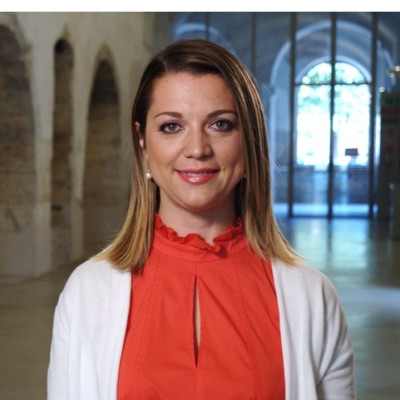Studying at the University of Verona
Here you can find information on the organisational aspects of the Programme, lecture timetables, learning activities and useful contact details for your time at the University, from enrolment to graduation.
Academic calendar
The academic calendar shows the deadlines and scheduled events that are relevant to students, teaching and technical-administrative staff of the University. Public holidays and University closures are also indicated. The academic year normally begins on 1 October each year and ends on 30 September of the following year.
Course calendar
The Academic Calendar sets out the degree programme lecture and exam timetables, as well as the relevant university closure dates..
| Period | From | To |
|---|---|---|
| primo semestre triennali | Sep 19, 2016 | Jan 13, 2017 |
| secondo semestre triennali | Feb 20, 2017 | Jun 1, 2017 |
| Session | From | To |
|---|---|---|
| Prove intermedie primo semestre | Nov 7, 2016 | Nov 11, 2016 |
| Appelli esami sessione invernale | Jan 16, 2017 | Feb 17, 2017 |
| Prove intermedie secondo semestre | Apr 10, 2017 | Apr 13, 2017 |
| Appelli esami sessione estiva | Jun 5, 2017 | Jul 7, 2017 |
| Appelli esami sessione autunnale | Aug 28, 2017 | Sep 15, 2017 |
| Session | From | To |
|---|---|---|
| Sessione autunnale | Nov 30, 2016 | Dec 1, 2016 |
| Sessione invernale | Apr 5, 2017 | Apr 7, 2017 |
| Sessione estiva | Sep 11, 2017 | Sep 13, 2017 |
| Period | From | To |
|---|---|---|
| Vacanze natalizie | Dec 23, 2016 | Jan 5, 2017 |
| Vacanze pasquali | Apr 14, 2017 | Apr 18, 2017 |
| Vacanze estive | Aug 7, 2017 | Aug 25, 2017 |
Exam calendar
Exam dates and rounds are managed by the relevant Economics Teaching and Student Services Unit.
To view all the exam sessions available, please use the Exam dashboard on ESSE3.
If you forgot your login details or have problems logging in, please contact the relevant IT HelpDesk, or check the login details recovery web page.
Academic staff
Borello Giuliana
 giuliana.borello@univr.it
giuliana.borello@univr.it
 045 802 8493
045 802 8493
 simona.gamba@univr.it
simona.gamba@univr.it
Study Plan
The Study Plan includes all modules, teaching and learning activities that each student will need to undertake during their time at the University.
Please select your Study Plan based on your enrollment year.
1° Year
| Modules | Credits | TAF | SSD |
|---|
2° Year activated in the A.Y. 2017/2018
| Modules | Credits | TAF | SSD |
|---|
3° Year activated in the A.Y. 2018/2019
| Modules | Credits | TAF | SSD |
|---|
| Modules | Credits | TAF | SSD |
|---|
| Modules | Credits | TAF | SSD |
|---|
| Modules | Credits | TAF | SSD |
|---|
| Modules | Credits | TAF | SSD |
|---|
Legend | Type of training activity (TTA)
TAF (Type of Educational Activity) All courses and activities are classified into different types of educational activities, indicated by a letter.
Principles of taxation (2018/2019)
Teaching code
4S00411
Teacher
Coordinator
Credits
6
Language
Italian
Scientific Disciplinary Sector (SSD)
IUS/12 - TAX LAW
Period
secondo semestre lauree triennali dal Feb 18, 2019 al May 31, 2019.
Learning outcomes
The course aims at providing students with a basic knowledge on the relevant constitutional principles of the Italian tax system, on the rights and obligations of the taxpayer, on direct taxes (income tax and IRES) and VAT, both from the European and national perspective.
Program
TAXES AND RULES OF TAXATION
1. THE ITALIAN TAXATION SYSTEM: RIGHTS AND DUTIES OF TAXPAYERS
2. VALUE ADDED TAX
Physiognomy of V.A.T.; 2. Symptoms of ability to pay V.A.T.; 3. relevant transactions: the supply of goods; 4. Performances and services; 5. The subjective point: the pursuit of undertakings, trades and professions; 6. The area profile relevant transaction; 7. The timing of the relevant transaction and chargeability of V.A.T.; 8. The sales "non-taxable": a) goods and services supplied to non-EU countries 9. Imports; 10. The intra-Community supplies 11. Exempt transactions 12. Taxable amount and rate of each transaction taxed with V.A.T.; 13 obligation of billing and compensation, right of deduction of VAT on purchases; 14 formal obligations; 15. Rules regarding procedure: liquidations, payments, statements annual repayments
3. INCOME TAXES (IRPEF and IRES)
I) evolution of income taxes system;
II) fundamental rules;
III) type of individual incomes;
IV) business profits;
V) no-profit organizations and non-residence subjects;
VI) corporate groups.
Textbooks:
PRINCIPI DI DIRITTO TRIBUTARIO, SALVATORE LA ROSA, ultima EDIZIONE, GIAPPICHELLI, TORINO,: da pag. 1 a pag. 119; da pag. 141 a pag. 175; da pag. 203 a pag. 221; da pag. 223 a pag. 238
About V.A.T.:
- L’Imposta sul Valore Aggiunto sulle operazioni transnazionali, Maria Grazia Ortoleva, Quiedit, 2013
Examination Methods
The exam – which aim is to evaluate the learning progress regarding basic law notions, the student's capability to use proper legal jargon, to link the different legal institutions and to understand their reason – will take place according to procedures here described.
A) Students who intend to make use of the possibility to take the intermediate exam "a voto parziale", will undergo a double-step examination.
a1) Firstly they will take the test "a voto parziale", which will cover the first half of the topic covered during the course (sources, interpretation of tributary norms, rights and duties of taxpayers, tax statements and payments obligation, rights and duties, acts withholding and tax replacements; Irpef and Ires) will consist of:
- a closed-response test (which will amount to 40% of final grade), the grade evaluation is on a thirtieth scale, is made of twelve questions: for each correct answer a point is assigned, for each mistake a quarter of a point is subtracted, no answer does not change the score. This exam lasts 20 min.
In order to reach the pass mark (18/30) students have to answer correctly 7 out of 12 questions.
- number two essay questions (worth 60% of final grade) aimed at evaluating students’ ability to make connections between different topics. This exam lasts 20 min. In order to reach the pass mark (18/30) students have to answer correctly at least one out of two question.
The first part, that will last 40 minutes, will be considered passed if both subparts are passed.
The evaluation will be considered valid only for the first exam period after students' attendance.
The writing test is opened to both attending and non-attending students.
a2) The second exam is related to the topics we dealt with in the second part of the course (VAT). This test consist of:
- a multiple choice test which will be 40% of the final grade. This part is made of 12 questions, for every right answer is assigned one point, for every wrong answer is subtracted 1/4 point, non-given answers are not worth any point. This part of the test is going to last 20 minutes. In order to reach the pass mark (18/30) students have to reach a minimum score of 7/12.
- two essay questions (60% of the final grade) are going to be focused on students’ ability to make connections between different topics. This part lasts 20 minutes. In order to reach the pass mark (18/30) students have to answer at least at one of the questions.
The second test lasts in total 40 minutes. It is passed only if the student reaches the pass mark both in the multiple choice part and in the essay questions. The final grade is made up of the arithmetic mean between the two grades.
B) Students, that decide not to take the midterm or students who both haven’t reach the pass mark or have refused their grade, have to take another exam that consists of:
- a multiple choice test (30% of the grade), evaluated in thirtieths, is made up of 24 questions, for every right answer is assigned one point, for every wrong answer is subtracted 1/4 point, non-given answers are not worth any point. This test lasts 35 minutes. In order to reach the pass mark (18/30) students have to score at least 14/24 points.
- number 3 essay questions (70% of the grade) are going to be focused on students’ ability to make connections between different topics. This test lasts 30 minutes. In order to reach the pass mark (18/30) student must answer to at least two questions.
In total the test lasts 65 minutes, it is considered passed only if the student reaches the pass mark in both multiple choice and essay questions. The final grade is made up with the arithmetic weighted average between the two grades.
It is also possible for students who want to improve their final grade to take an oral test about the whole program.
Type D and Type F activities
| years | Modules | TAF | Teacher |
|---|---|---|---|
| 1° | Advanced Excel Laboratory (Verona) | D |
Marco Minozzo
(Coordinator)
|
| 1° | Excel Laboratory (Verona) | D |
Marco Minozzo
(Coordinator)
|
Career prospects
Module/Programme news
News for students
There you will find information, resources and services useful during your time at the University (Student’s exam record, your study plan on ESSE3, Distance Learning courses, university email account, office forms, administrative procedures, etc.). You can log into MyUnivr with your GIA login details: only in this way will you be able to receive notification of all the notices from your teachers and your secretariat via email and soon also via the Univr app.
Graduation
List of theses and work experience proposals
| theses proposals | Research area |
|---|---|
| Proposte di tesi triennali | Various topics |
































